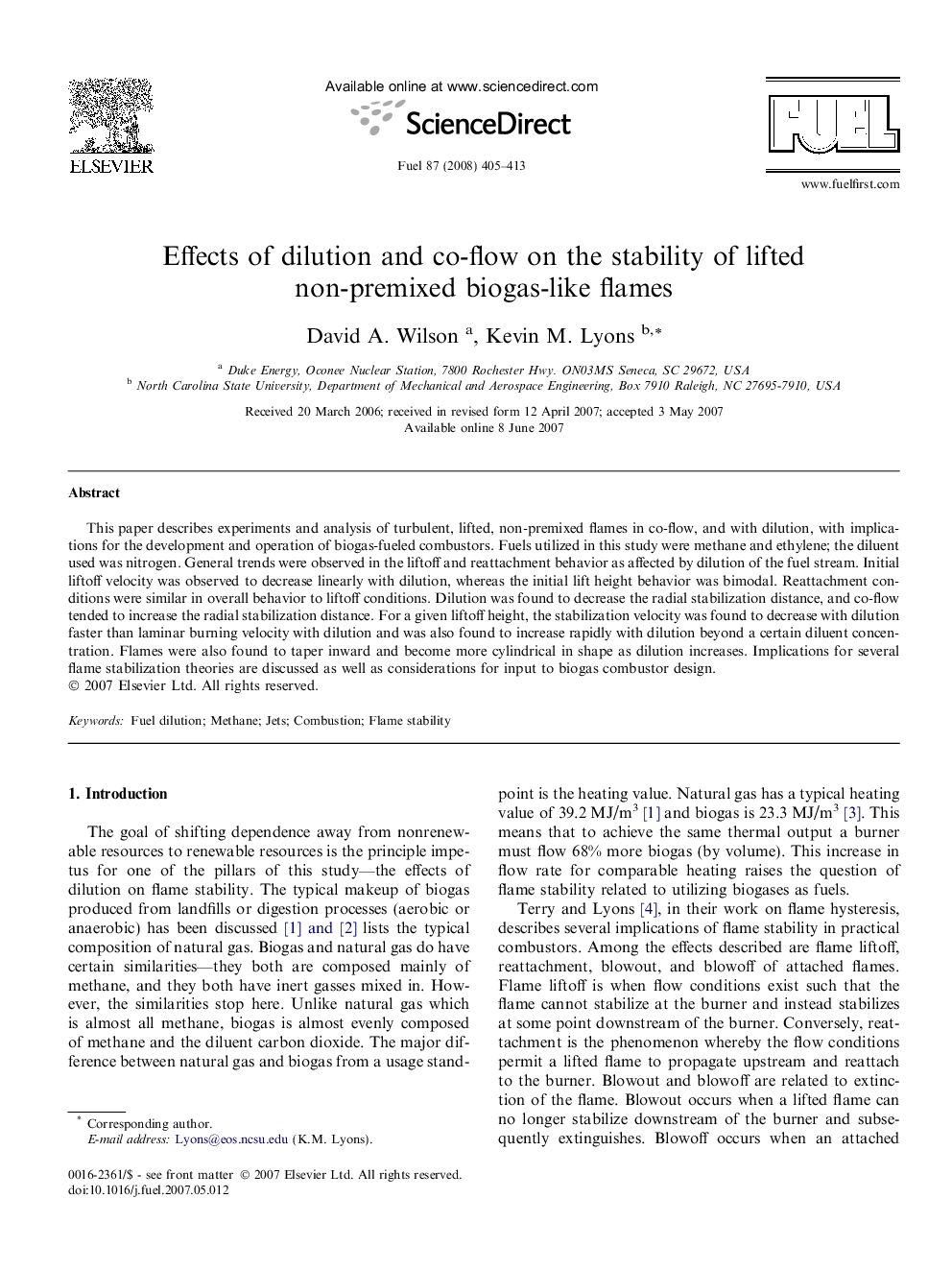| Article ID | Journal | Published Year | Pages | File Type |
|---|---|---|---|---|
| 207269 | Fuel | 2008 | 9 Pages |
This paper describes experiments and analysis of turbulent, lifted, non-premixed flames in co-flow, and with dilution, with implications for the development and operation of biogas-fueled combustors. Fuels utilized in this study were methane and ethylene; the diluent used was nitrogen. General trends were observed in the liftoff and reattachment behavior as affected by dilution of the fuel stream. Initial liftoff velocity was observed to decrease linearly with dilution, whereas the initial lift height behavior was bimodal. Reattachment conditions were similar in overall behavior to liftoff conditions. Dilution was found to decrease the radial stabilization distance, and co-flow tended to increase the radial stabilization distance. For a given liftoff height, the stabilization velocity was found to decrease with dilution faster than laminar burning velocity with dilution and was also found to increase rapidly with dilution beyond a certain diluent concentration. Flames were also found to taper inward and become more cylindrical in shape as dilution increases. Implications for several flame stabilization theories are discussed as well as considerations for input to biogas combustor design.
